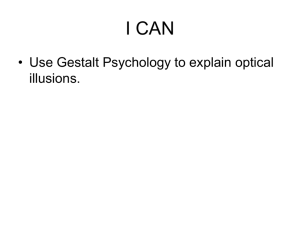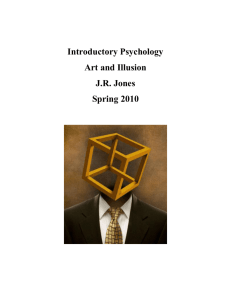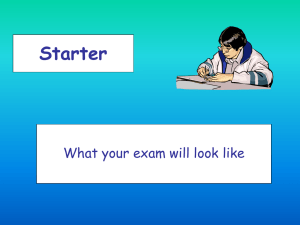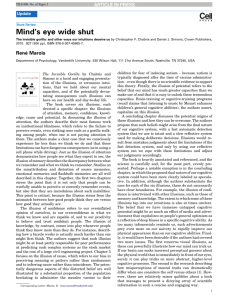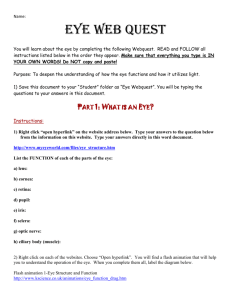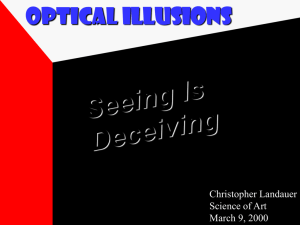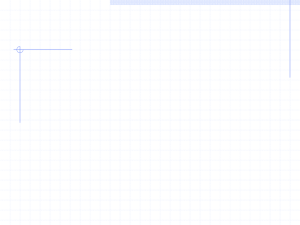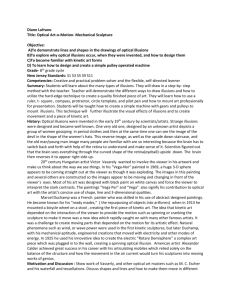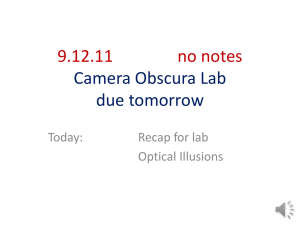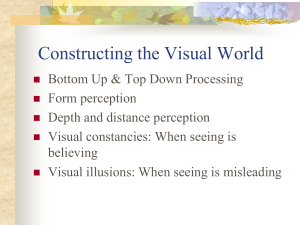Gestalts theory of illusion part 1
advertisement
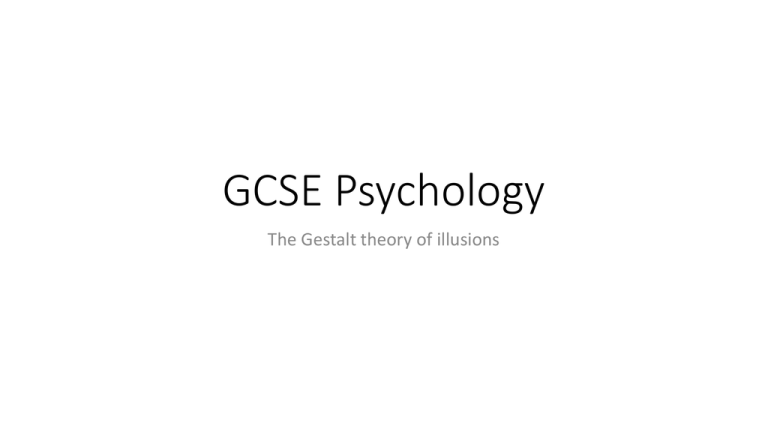
GCSE Psychology The Gestalt theory of illusions Learning objectives • To learn abut the Gestalt theory of illusions • To identify the strengths and weaknesses of this theory • To learn about Gregory’s perspective theory of illusions • To learn how to evaluate Gregory’s theory. Illusions recap Ponzo illusion Muller Lyer illusion Hering illusions What type of illusions are these? DISTORTIONS What about these? Kanizsa Triangle FICTIONS And these? Rubin’s Vase Leeepers Lady AMBIGUOUS FIGURES Gestalt theory of illusions • Gestalt theory could explain these illusions by.... DISTORTIONS Can only explain the distortion MullerPonzo illusion Lyer!! Muller Lyer illusion When we perceive the figure as a whole, pints / fins as well, we tend to ‘add’ the fins to the straight line perceiving it as a Hering illusions whole rather than its separate parts. So we are stretching the line out. What about these? Kanizas triangle – according to the law of closure, we should make out a whole even though there are parts missing....we should make out a 6 pointed star but we don’t – we see 2 triangles. Kanizsa Triangle Explains fictions well ~ closure law but for some there is a problem... FICTIONS Seems to use different explanations at different times AMBIGUOUS FIGURES Tells us about ambiguous figs well ~ using figure-ground law Perception has to be organised differently to see the different images due to the whole being made up of the same parts meaning they can not be seen at the same time Task... • Consider the strengths and weaknesses of Gestalt theory. Gestalt theory of illusions • You should now produce a booklet or poster to explain the Gestalt theory of illusions. • Use the internet to help you also but stick to the following points: • Explaining fictions, which do we recognise first?, • explaining distortions • explaining ambiguous
